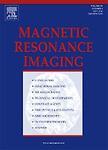版权所有:内蒙古大学图书馆 技术提供:维普资讯• 智图
内蒙古自治区呼和浩特市赛罕区大学西街235号 邮编: 010021

作者机构:Department of Physics and Astronomy Northwestern University Evanston IL 60208 USA Center for Advanced Cement based Materials Northwestern University Evanston IL 60208 USA
出 版 物:《MAGNETIC RESONANCE IMAGING》 (磁共振成像)
年 卷 期:1996年第14卷第7-8期
页 面:785-791页
核心收录:
学科分类:080805[工学-电工理论与新技术] 080904[工学-电磁场与微波技术] 0808[工学-电气工程] 0809[工学-电子科学与技术(可授工学、理学学位)] 08[工学] 1009[医学-特种医学]
主 题:NMR cement hydration freezing porous media
摘 要:Nuclear magnetic resonance relaxation analysis has been applied to interpret the evolution of microstructure in a cement paste during hydration, ii basic understanding of the wet-dry and freeze-thaw processes of cement pastes has been developed, The pore structure evolution has been studied by the suppression of the freezing temperature of water and compared with spin-spin relaxation analysis performed at room temperature, Both methods consistently show that hydrating cement pastes have two principal components in their size distribution, The NMR relaxation times provide a measure of the characteristic pore sizes, Their interpretation is made in the context of a fast exchange model. Supercooling and thawing point depression of confined water has been studied systematically, The depression of the freezing point of liquid water confined within a pore was found to be dependent on the pore size, with capillary pore water freezing at 240 K and the remaining gel pore water freezing over a temperature range extending to as low as 160 K, A modified Gibbs-Thompson analysis was used to determine pore volume distributions from the distribution of thawing temperatures. Copyright (C) 1996 Elsevier Science Inc.